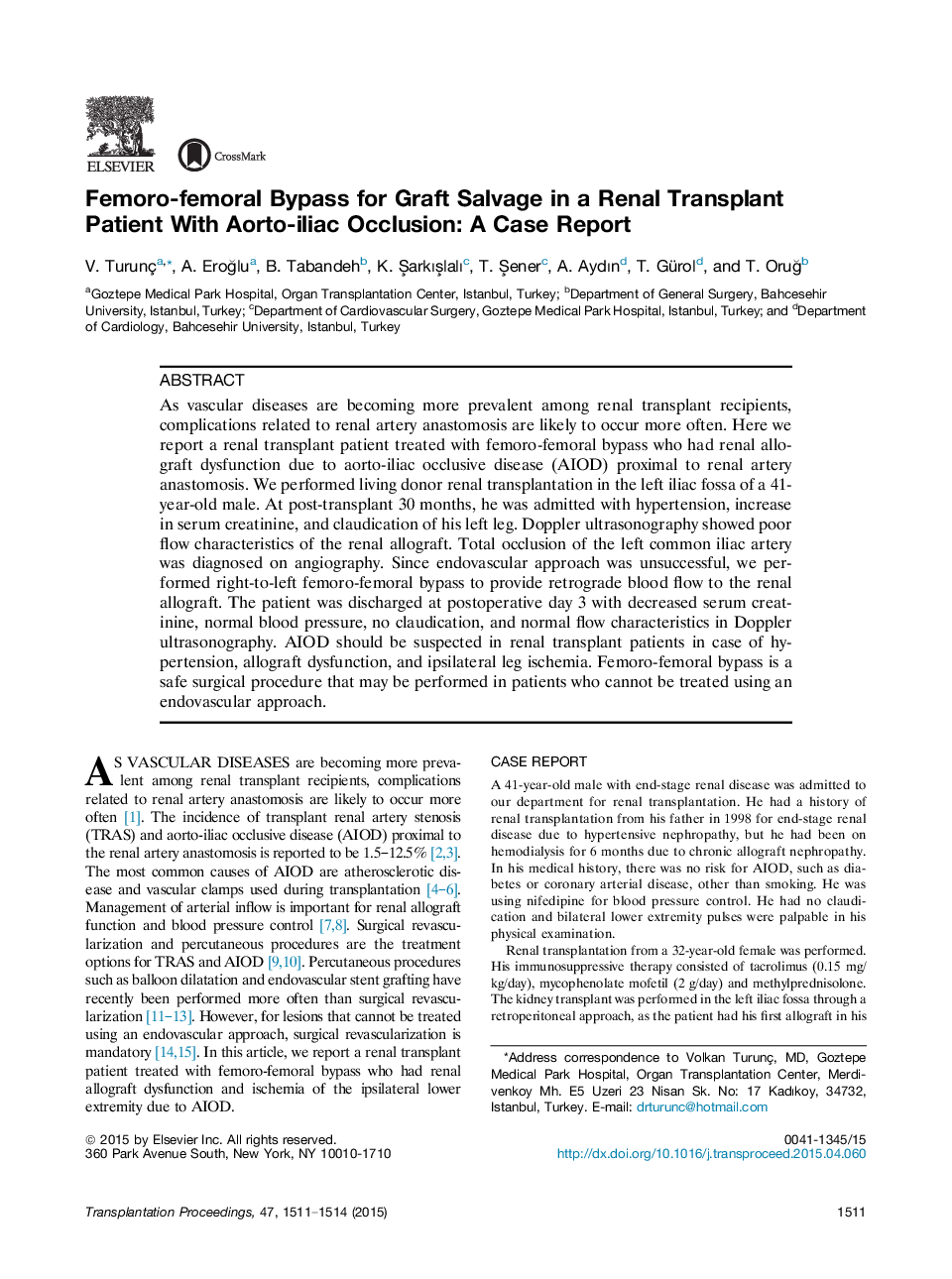| Article ID | Journal | Published Year | Pages | File Type |
|---|---|---|---|---|
| 4257416 | Transplantation Proceedings | 2015 | 4 Pages |
As vascular diseases are becoming more prevalent among renal transplant recipients, complications related to renal artery anastomosis are likely to occur more often. Here we report a renal transplant patient treated with femoro-femoral bypass who had renal allograft dysfunction due to aorto-iliac occlusive disease (AIOD) proximal to renal artery anastomosis. We performed living donor renal transplantation in the left iliac fossa of a 41-year-old male. At post-transplant 30 months, he was admitted with hypertension, increase in serum creatinine, and claudication of his left leg. Doppler ultrasonography showed poor flow characteristics of the renal allograft. Total occlusion of the left common iliac artery was diagnosed on angiography. Since endovascular approach was unsuccessful, we performed right-to-left femoro-femoral bypass to provide retrograde blood flow to the renal allograft. The patient was discharged at postoperative day 3 with decreased serum creatinine, normal blood pressure, no claudication, and normal flow characteristics in Doppler ultrasonography. AIOD should be suspected in renal transplant patients in case of hypertension, allograft dysfunction, and ipsilateral leg ischemia. Femoro-femoral bypass is a safe surgical procedure that may be performed in patients who cannot be treated using an endovascular approach.
